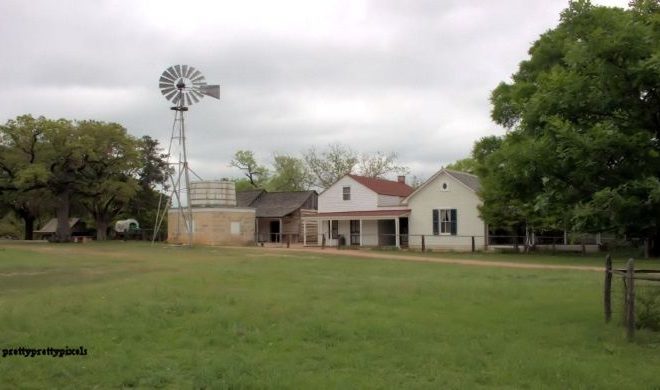 Emily Chavez
Emily Chavez
Things to Do
A Visit to the Sauer-Beckmann Living History Farm
Photos courtesy of Emily Chavez, Pretty Pretty Pixels Photography
Nestled on the grounds of Lyndon B. Johnson State Park in Stonewall, Texas, the Sauer-Beckmann Living History Farm provides an authentic “off the grid” experience of what pioneering life at the turn of the century was really like. Checking in at the Visitors Center near the entrance of LBJ State Park, visitors can either walk a short handicapped accessible walkway or drive down the park road to the farm. Upon arrival, life is played out as it was in the early 1900s.

The day I visited, I stopped at the Visitors Center and learned admission is always free. I was given a parking permit for my car and drove about a quarter mile to the small parking lot across from the farm. My mother, a descendent of the area, joined me that day. I watched her examine the entrance’s plants and authentic stone work realizing today was a test. Would the Sauer-Beckmann Living History Farm live up to her expectations as an authentic pioneer farm life experience? I would soon be able to tell.
From 8 a.m. – 4:30 p.m., seven days a week, a period-costumed family (employees of the Texas Parks and Wildlife Department) runs the farm. Educating visitors, the “mother” and “father” answer questions and share information. Actual chores and live demonstrations of canning, cooking, planting, blacksmithing, quilting, soap making, and more are performed by the “family” just as they were carried out a century ago. Visitors are welcome to participate.
Along the wood-fenced pathway on the way to the barn, cows drank from their trough and pigs rooted in their mud hole. Inside, the natural light revealed a whetstone for sharpening knives, shears for shearing sheep, and a plow for planting, among other treasures.
“My grandfather used a plow like this one. It wouldn’t work if the horses weren’t taken care of, though,” my mother commented. “He made sure all the animals were fed, even before breakfast. Then, before the sun came up, he checked to see that the horses’ shoes were nailed in right and their bridles were even with one another so he could guide them to make straight rows when he planted. It was hard work,” she continued.
Stepping out of the barn, I looked back across its packed dirt floor and could almost see my great-great grandfather preparing oats at the bins for the horses to eat. Outside, meandering turkeys and colorful roosters darted across the open grass. A shaded hiking trail, leading back to the Visitors Center, was to the left. We decided to follow the walkway leading to the families’ houses.

The first house’s covered porch held a pitcher and large bowl set on an outside table. “That’s for [the farmers] to wash their hands and face before coming inside the house for dinner,” my mom explained. “They had to be clean to come inside. That was the rule.”
A corn cob husker, hanging dried sausage, and tubs of lard stood in the dim lit rooms. Visitors questioned what the tubs of lard were used for. “Those were for preserving sausage before refrigeration,” my mom explained to them like a park employee herself.
The second house, the children’s dormitory, showcased children’s handmade clothing, kitchen utensils, oil lamps, authentic quilts, and more, bringing a feel of basic life before automation Last, the Sauer House, built in 1869, showcased much smaller living quarters. Considering modern life, filled with technology, this original limestone structure was humbling.
Outside, a presentation called “Itz a Garden” was being given. Visitors watched and listened as Mr. Itz demonstrated how gardens were made and maintained during the 1900’s, allowing in-depth questions and conversation of the tools and techniques used. “Yes. He’s right,” my mom confirmed. “That’s how they did it.”
At the end of our visit, I am happy to report, the Sauer-Beckmann Living History Farm passed the test! The Sauer-Beckmann Living History Farm is open seven days a week, closed only Thanksgiving, Christmas Day, and New Year’s Day. Scheduled tours are available.

A few farm events include Fun with Fibers, which explores sewing, quilting, and rope making on the farm a century ago, Fall holiday cookie decorating, candle making, and awaiting the arrival of St. Nicholas, naturally dying Easter eggs, seeing a traditional German Lamb Cake, and preparing a grass Easter nest.
Visit the LBJ State Park website for more information on the Sauer-Beckmann Living History Farm. The farm is located at LBJ State Park & Historic Site, 199 Park Road 52, Stonewall, Texas. To stay up to date on the park news and events, follow the park’s Facebook page.


